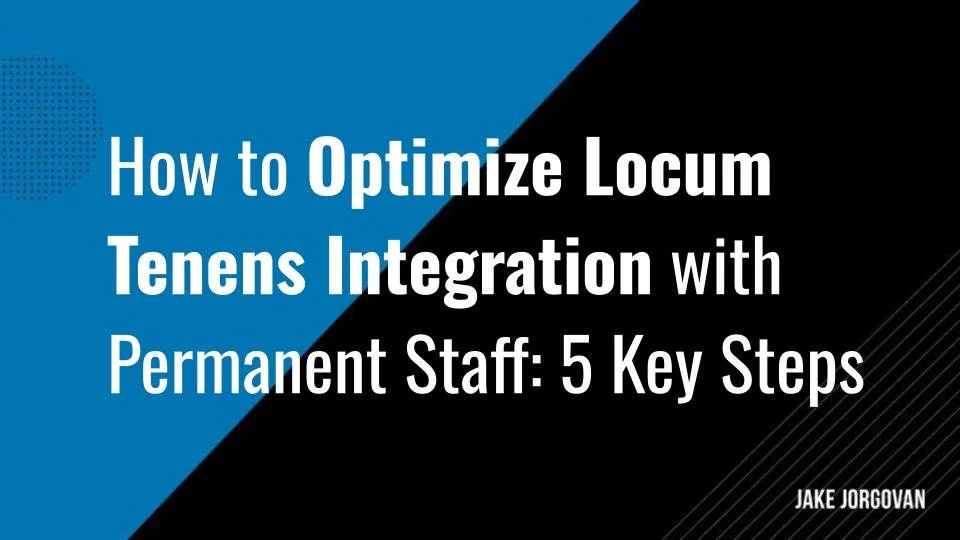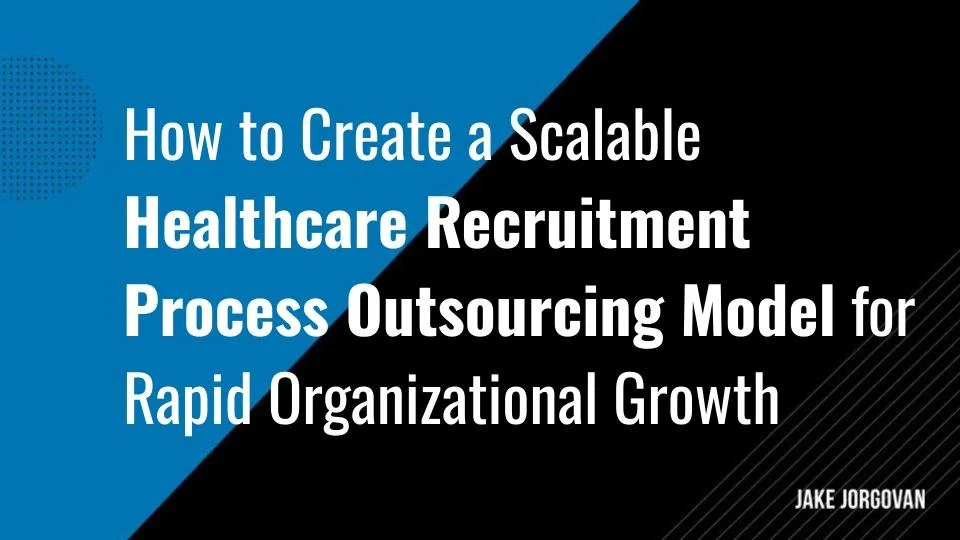Leverage Nurse RPOs to Staff Rural and Underserved Areas
Staffing rural and underserved areas with qualified nurses is a critical challenge.
Traditional hiring methods often fall short in these regions.
Nurse Recruitment Process Outsourcing (RPO) offers a powerful solution to bridge this gap.
With a strategic approach, Nurse RPOs can efficiently attract and place skilled talent where they are needed most.
This article will explore how healthcare providers can leverage Nurse RPOs to overcome staffing shortages in rural areas.
Understanding the benefits and steps involved allows organizations to enhance patient care while addressing persistent workforce issues.
5 Key Strategies for Leveraging Nurse RPOs for Rural and Underserved Areas
1) Partner With Specialized RPO Firms Familiar With Rural Healthcare Challenges
To effectively staff rural and underserved areas, it's crucial to engage RPO providers who specialize in these challenges. They understand the nuances of attracting healthcare professionals to locations that are often overlooked. Here’s how you can leverage their expertise to boost your staffing efforts:
Identify RPO providers with rural recruitment experience: Look for providers that already have a track record of successfully placing nurses in rural or underserved areas. Their expertise in understanding the local healthcare landscape will significantly improve your hiring results.
Tailor your recruitment strategy to local needs: Work closely with your RPO provider to design a recruitment approach that addresses specific challenges in the area, like limited housing options or community integration. This creates a more attractive proposition for candidates who might be hesitant to work in rural settings.
Leverage RPO’s existing network of healthcare professionals: RPO providers often have access to a pool of pre-vetted nurses with a willingness or interest in working in underserved areas. Use their established networks to fast-track your hiring and avoid long vacancy periods.
Use data-driven insights from the RPO provider: Many RPO firms can offer you advanced analytics that pinpoint where you are most likely to find qualified candidates. Using this data helps you target your outreach more effectively and focus on regions that have historically produced rural healthcare workers.
Maintain regular communication for real-time adjustments: Stay in close contact with your RPO partner to monitor progress. Adjust your strategy as needed based on feedback from candidates and evolving staffing needs.
Insider Tip: We recommend negotiating exclusive access to your RPO provider’s talent pool for rural staffing needs. This ensures you won’t be competing with other clients for the same limited set of qualified nurses.
2) Utilize Data-Driven Recruitment Strategies to Target Qualified Candidates
A targeted approach is essential when recruiting healthcare professionals for rural areas. Data-driven recruitment enables you to be precise and cut through the inefficiencies of broad outreach. With the right data, you focus on qualified candidates who are more likely to accept the role and remain long-term. Here’s how you can implement a data-driven recruitment strategy effectively:
Start with analyzing local demographics: Use data from RPO providers to understand the specific characteristics of the population in the area. This helps you identify which types of nurses may be more inclined to work in and stay within a rural community.
Identify talent pools with similar rural backgrounds: Look for candidates who have previously worked in rural or underserved areas. This ensures they are familiar with the lifestyle and challenges of the job, increasing retention rates.
Leverage predictive analytics for more accurate targeting: Work with your RPO provider to apply predictive models that identify candidates likely to succeed in a rural healthcare environment. This could include data points like past job satisfaction, adaptability, and longevity in previous positions.
Optimize job listings using data insights: Tailor your job postings based on the data. Focus on highlighting the factors that matter most to your target candidates, such as work-life balance, community impact, and opportunities for professional growth.
Track performance and iterate regularly: Monitor the effectiveness of your recruitment strategy by tracking metrics like time-to-hire, cost-per-hire, and retention rates. Adjust your approach as new data becomes available to maintain optimal performance.
Insider Tip: We advise requesting access to your RPO provider’s recruitment performance dashboards. This allows you to make real-time, data-driven decisions that can improve your hiring outcomes without unnecessary delays.
3) Implement Flexible and Remote Work Options to Attract a Wider Pool of Nurses
Attracting top talent can be a challenge due to the limitations of the job market. Flexible and remote work options are critical to broaden your reach and appeal to nurses who may otherwise overlook these positions. Offering alternative work arrangements increases your pool of potential hires and can drastically improve staff retention. Here’s how you can implement this strategy effectively:
Offer hybrid or remote positions where feasible: If certain nursing roles allow for telehealth or remote work, consider incorporating these options into your job listings. Even a hybrid approach, where nurses can balance on-site and off-site work, will make the position more attractive to a wider audience.
Create flexible scheduling options: Rural and underserved areas may have fewer staff, leading to long shifts or rotating schedules. Provide nurses with flexible shift options that allow them to better manage their work-life balance. This can be a significant selling point, especially for experienced candidates who prioritize personal time.
Leverage technology to expand possibilities: Use digital platforms and telehealth systems to enable nurses to perform parts of their jobs remotely. For example, follow-ups or administrative tasks can be handled off-site, which opens up more recruitment options for candidates not willing to relocate fully.
Highlight the benefits of remote work in your outreach: Clearly communicate these flexible work options in your job advertisements. Make sure potential candidates understand that your healthcare facility embraces modern work arrangements, which increases their likelihood of applying.
Regularly assess and adjust: Monitor the impact of flexible and remote work arrangements on recruitment and staff retention. Adjust your policies as necessary to ensure they continue meeting the needs of both the facility and the staff.
Insider Tip: We recommend integrating part-time remote options for specialized nurse positions, such as case management or patient education roles. This allows you to tap into a skilled workforce that isn’t geographically bound and enhances your recruitment reach.
4) Leverage RPO Networks to Streamline the Hiring Process for Hard-to-Fill Roles
Recruiting for rural and underserved areas comes with unique challenges, especially when filling hard-to-reach roles. Leveraging RPO networks streamlines this process by tapping into established pipelines of qualified candidates. These networks provide immediate access to a broad pool of professionals, which reduces time-to-hire and helps fill positions faster. Here's how you can make the most of these RPO networks:
Use pre-vetted candidate pools: RPO providers often maintain databases of pre-screened candidates who meet the qualifications for specialized roles. This allows you to skip early screening steps and move directly to interviewing and onboarding, saving valuable time.
Access passive candidates: RPO networks are designed to engage not only active job seekers but also passive candidates. This is crucial for rural healthcare, where local interest may be limited. By accessing a larger pool of passive candidates, you expand your reach beyond those actively applying for jobs.
Prioritize candidates based on availability: RPO networks allow you to prioritize candidates based on their availability and willingness to relocate. You reduce the risk of extended vacancies by focusing on candidates who can start quickly or are more inclined to move to rural areas.
Optimize onboarding through RPO coordination: Once you've identified the right candidates, many RPO providers can help coordinate the onboarding process. This includes handling background checks, credential verification, and other time-consuming tasks that often delay hiring.
Monitor the network for future roles: After filling your current positions, stay in touch with your RPO provider to monitor potential candidates for future openings. Their pipeline constantly refreshes, offering new opportunities to fill roles as they arise.
Insider Tip: We recommend asking your RPO provider for candidate segmentation data based on previous successful rural placements. This allows you to target candidates who are statistically more likely to thrive in underserved areas.
5) Focus on Retention Strategies Through Tailored Benefits and Community Integration Initiatives
Retaining nurses in rural and underserved areas requires more than just filling a vacancy. It's about creating a work environment that makes nurses want to stay. Tailored retention strategies help reduce turnover and build long-term relationships with staff. To achieve this, you need a focused approach that meets the specific needs of nurses working in these challenging settings:
Offer competitive, location-specific benefits: Rural areas often struggle to match the salaries of urban centers. Compensate by offering unique benefits like housing allowances, relocation assistance, or student loan repayment programs. These perks compensate for the salary gap and provide additional incentives for nurses to stay.
Provide strong community integration: Nurses in rural areas can feel isolated, especially if they’re new to the region. Organize local events, introduce them to community leaders, and offer resources that help them feel connected. This sense of belonging plays a huge role in long-term retention.
Implement targeted professional development: Nurses in underserved areas need access to growth opportunities to avoid burnout or stagnation. Provide them with access to continuing education, certifications, and leadership programs. This will improve their skill set and strengthen their commitment to your facility.
Ensure a manageable workload: Staffing shortages often lead to burnout. Focus on balancing nurse-to-patient ratios and providing sufficient support. Offering additional staff, flexible hours, and mental health resources keeps nurses from feeling overwhelmed.
Maintain open lines of communication: Regular check-ins with nursing staff allow you to address concerns early and adjust policies to fit their needs. A transparent, open-door approach creates trust and increases staff satisfaction.
Insider Tip: We suggest creating a mentorship program that pairs new hires with experienced rural nurses. This will help them adjust to the role's challenges and build a support system that can ensure long-term retention.
Find the Right Nurse Talent for Rural and Underserved Areas
Leveraging Nurse RPOs is more than just filling vacancies—it’s about sustainable solutions for healthcare access.
Rural and underserved areas need consistent, qualified care.
Partnering with the right RPO allows healthcare providers to build a stronger, more reliable workforce.
The stakes are high, and the right strategy can transform patient outcomes in these communities.































